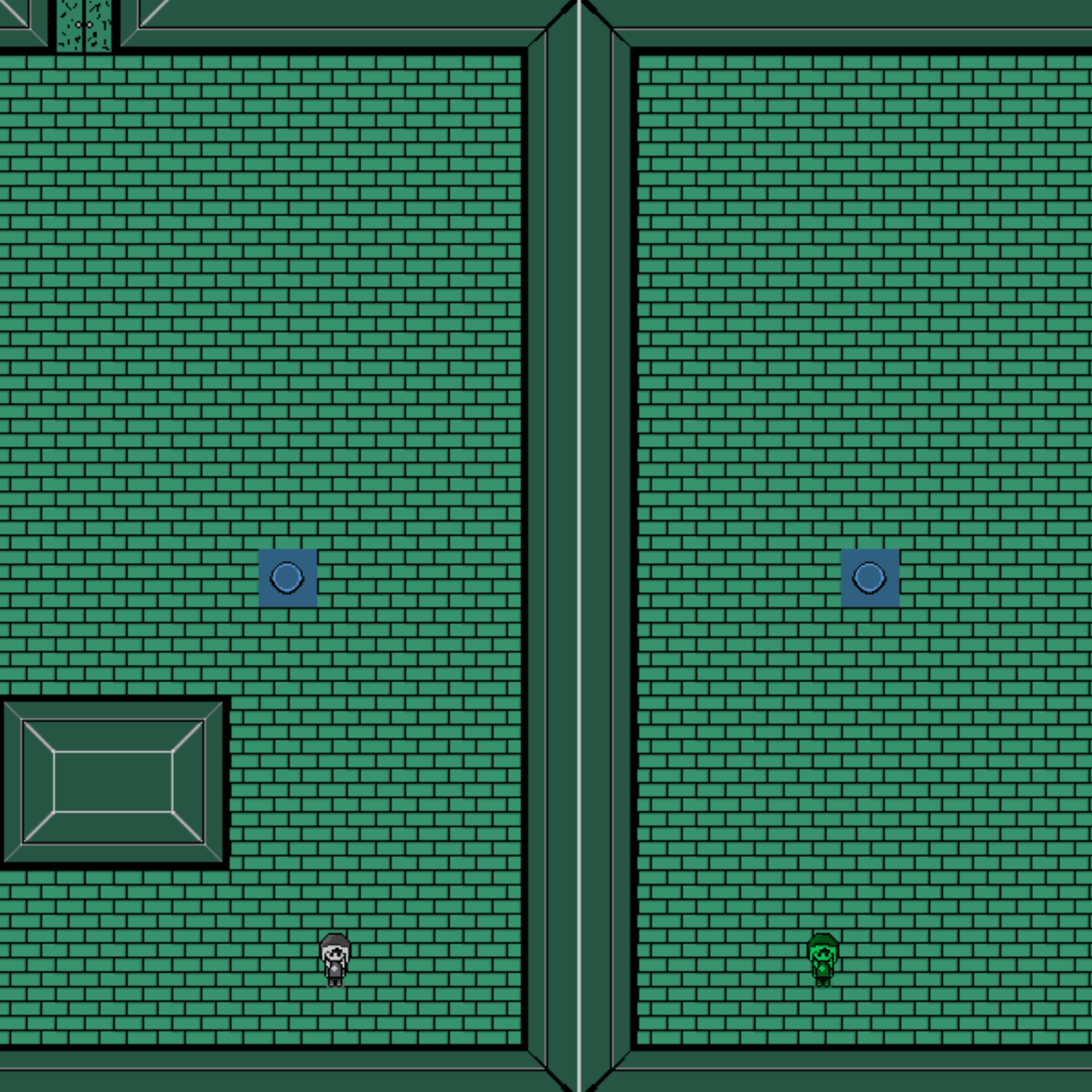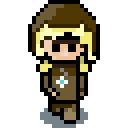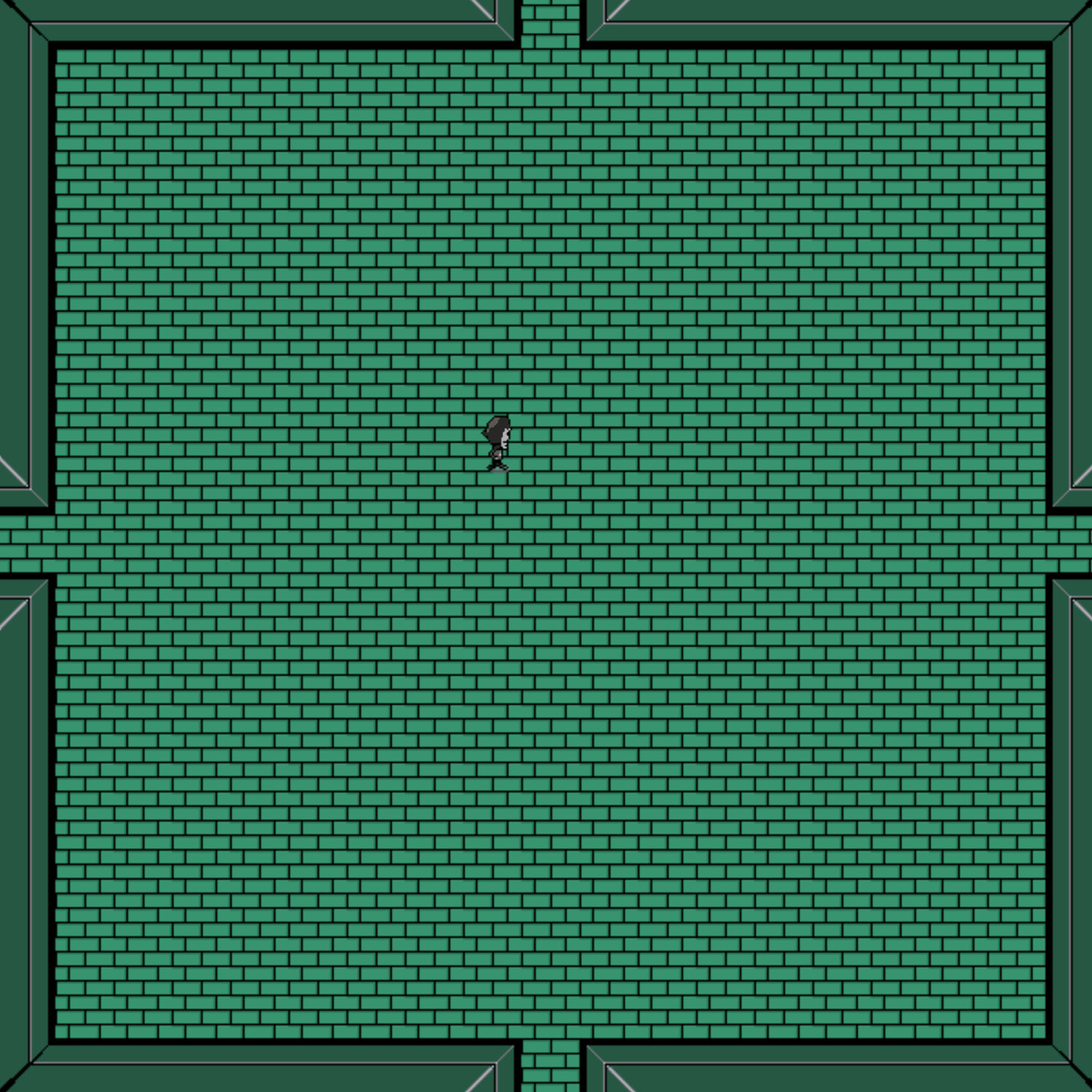
For March, I started with an idea I had sitting on the back-burner for a while. Whenever I get an idea that seems worth pursuing, I write it down in a journal. At the beginning of March, I looked through my journal for an idea to work on, and I found one I feel motivated to work on almost immediately!
The concept actually has its roots in chemistry. There's an idea called chirality in chemistry. I am, by no means, a reliable voice on the subject of chemistry, but I understand chirality to be the idea that you can have two molecules that are composed of the same atoms, but are geometrically different due to how they form their bonds. Sometimes, chirality can cause drastic changes in properties and behavior between molecules.
I was thinking about how I could represent that sort of concept using the mechanics of a game. I settled on the idea of a 2D top-down puzzle/adventure game where many of the puzzles are based off the idea of cooperating with a reflection of yourself. Only, your reflection doesn't behave exactly as you do.
I started introducing some basic puzzle elements to interact with along with an implementation of the "mirror image" mechanic. Here's a basic implementation:

This has been a lot of fun to work on. I'm also pleasently surprised with my pixel art abilities. I didn't know I was able to make something that looked this cool:

I love the idea. The puzzles are fun to design, the basic mechanic seems simple to understand, yet rich in possibility. I think this will be a really fun project. It's so much fun, in fact, that I don't want it to be as constrained. When I first started making levels, that's all they were: little self-contained puzzle experiences that went from one room to the next. However, at that point, I asked a question: what if each puzzle was a piece of a bigger picture? In other words, what if this was a puzzle adventure game, and what if the area where there were mirror-image puzzles was just one area among others to explore and riddle your way through?
One of the first steps towards implementing this was organizing the rooms less linearly. I developed a simple camera-smoothing transition between rooms that looks pretty cool:

There's one other change I wanted to make to the mechanics of the game. I felt the mirror mechanic was really cool, but I wanted to make it more of a decision that the player makes. Thus, I'm toying around with the idea of the mirror mechanic being a usable item that the player has (maybe a little hand-mirror she can activate). When you activate the mirror, you move a cursor around to decide where your reflection materializes. Then, you interact with it as in the screenshot earlier in the article. I haven't yet implemented this idea. Before I do, I want to design a few levels on paper to test it out and see whether it's worth pursuing. It might not be. Perhaps the game is better off being a linear design, where you move from level to level with less freedom of choice.
As for the game being a bigger adventure, the idea is exciting, but I'm also aware of my capabilities, and I know it's unlikely I would be able to craft a full-scale adventure game in a month. Thus, I'm restricting myself to designing just one area of the adventure: the area focused on the mirror mechanic. I think I'll be able to make something fun and interesting this month with that idea.
Thanks for reading the first article for my progress in March. As I mentioned in the parent article, this month is going to be a bit crazy for me because I'm also going to the Game Developer's Conference for the first time towards the end of the month. Maybe I'll write a bit about that on my site. However, for now, I'll just plan on writing another article next weekend. Until then, so long!
<= Back